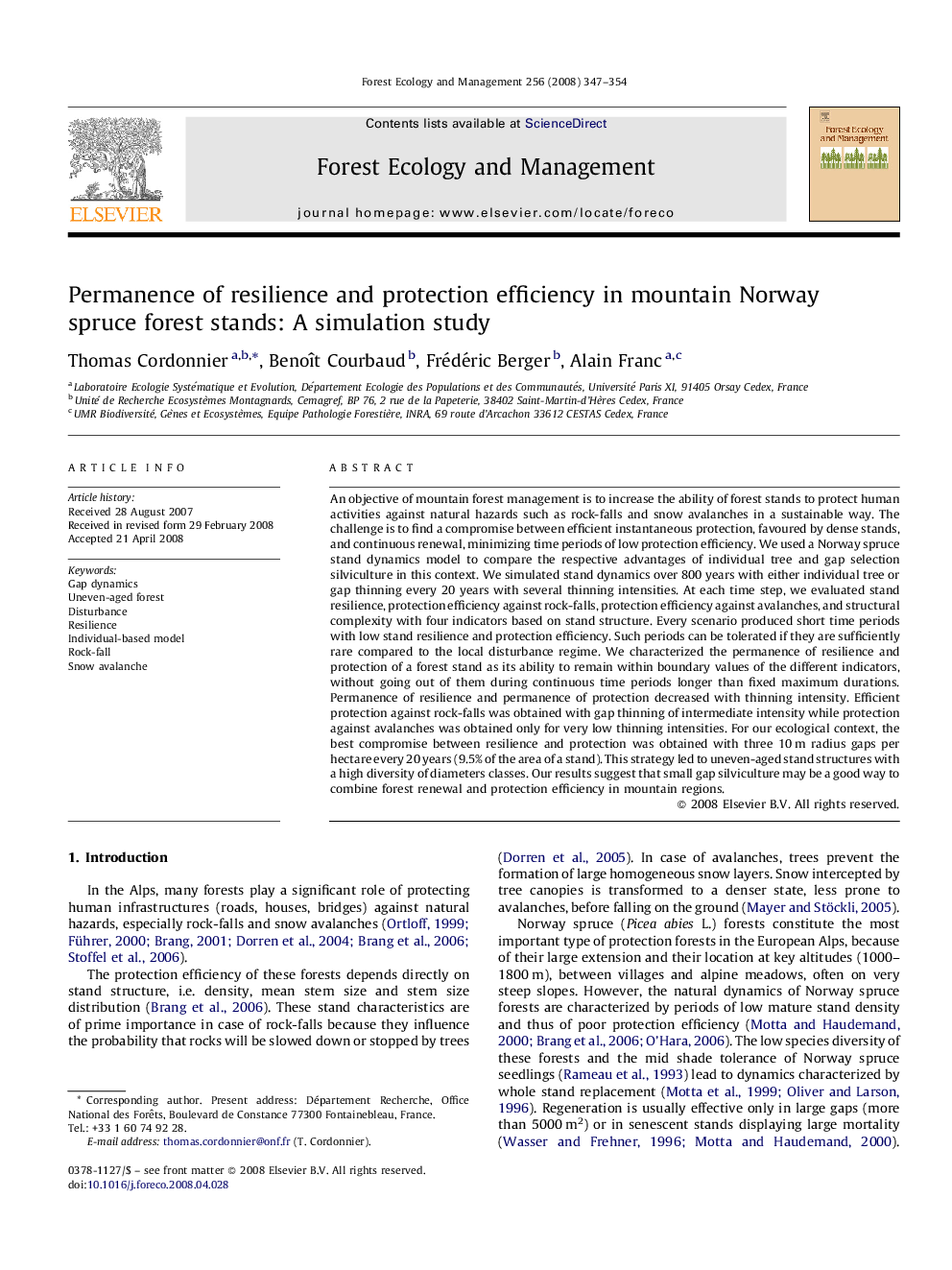| کد مقاله | کد نشریه | سال انتشار | مقاله انگلیسی | نسخه تمام متن |
|---|---|---|---|---|
| 88893 | 159325 | 2008 | 8 صفحه PDF | دانلود رایگان |

An objective of mountain forest management is to increase the ability of forest stands to protect human activities against natural hazards such as rock-falls and snow avalanches in a sustainable way. The challenge is to find a compromise between efficient instantaneous protection, favoured by dense stands, and continuous renewal, minimizing time periods of low protection efficiency. We used a Norway spruce stand dynamics model to compare the respective advantages of individual tree and gap selection silviculture in this context. We simulated stand dynamics over 800 years with either individual tree or gap thinning every 20 years with several thinning intensities. At each time step, we evaluated stand resilience, protection efficiency against rock-falls, protection efficiency against avalanches, and structural complexity with four indicators based on stand structure. Every scenario produced short time periods with low stand resilience and protection efficiency. Such periods can be tolerated if they are sufficiently rare compared to the local disturbance regime. We characterized the permanence of resilience and protection of a forest stand as its ability to remain within boundary values of the different indicators, without going out of them during continuous time periods longer than fixed maximum durations. Permanence of resilience and permanence of protection decreased with thinning intensity. Efficient protection against rock-falls was obtained with gap thinning of intermediate intensity while protection against avalanches was obtained only for very low thinning intensities. For our ecological context, the best compromise between resilience and protection was obtained with three 10 m radius gaps per hectare every 20 years (9.5% of the area of a stand). This strategy led to uneven-aged stand structures with a high diversity of diameters classes. Our results suggest that small gap silviculture may be a good way to combine forest renewal and protection efficiency in mountain regions.
Journal: Forest Ecology and Management - Volume 256, Issue 3, 30 July 2008, Pages 347–354